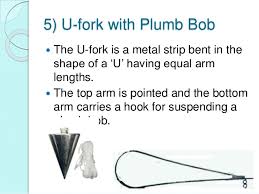PLANE TABLE SURVEYING
PRINCIPLE AND ACCESSORISES OF PLANE TABLE.
PRINCIPLE
The principle of plane tabling is parallelism, meaning that the rays
down from stations to subjects on the paper are parallel to the lines from the
stations to the objects on the ground. The relative positions of the objects on
the ground are represented by their plotted positions on the paper and lie on
the respective rays.
The table is always placed at
each of the successive stations parallel to the position is occupied at the
starting station. Plane tabling is graphical method of surveying. Here, the
field work and plotting are done simultaneously, and such survey does not
involve the used oh field book.
Plane table survey is suitable
for filling interior details when traversing is done by theodolite. Sometimes
traversing by plane table may also be done. But this survey is recommended for
the work where grate accuracy is not required. As the fitting and fixing
arrangement of this instrument is not perfect, most accurate work can not be
expected.
ACCESSORISES OF PLANE TABLE.
1). Plane table: The plane table is a drawing board of size by 750 mm x 600 mm made of
well-seasoned wood like teak, pine, etc. the top surface of the table is well
leveled. The bottom surface consists of a threaded circular plate for fixing
the table on the tripod stand by a wing nut.
The plane table is meant for
fixing drawing sheet over it. The positions of the objects are located on this
sheet by drawing rays and plotting to any suitable scale (Fig. 1).
2). The alidade: There are two types of alidade – plain and telescopic.
a). Plain alidade. The plain
alidade consists of a metal or wooden ruler of length about 50 cm. one of its
edges is beveled and is known as the fiducial edge. It consists of two vanes at
both ends which is hinged with the ruler. One is the known as the ‘object vane’
and carries a horse hair; the other is called ‘sight vane’ and is provided with
a narrow slit (Fig. 2).
Fig. 2
b). Telescope alidade. The telescope
alidade consists of a telescope meant for inclined sight or sighting distant objects
clearly. This alidade has no vanes at the ends but is provided fiducial edge.
The function of the alidade is
to sight objects. The rays should be drawn along the fiducial edge (Fig. 3).
Fig. 3
3). The sprit level: The sprit level is a small metal tube containing a small bubble of
sprit. The bubble is visible on the top along a graduated glass tube.
The sprit level is meant for
leveling the plane table (Fig. 4).
Fig. 4
4). The compass:
There are two types of alidade – (a) the tough compass and (b) the
circular box compass.
a). The Touch Compass. The
tough compass is a rectangular box made of non-magnetic metal containing a magnetic
needle pivoted at the centre. This compass consists a ‘0’ mark at both ends to
locate the N-S direction (Fig. 5).
Fig. 5
b). The Circular Box Compass. It
carries a pivoted magnetic needle at the centre. The circular box fitted on a
square base plate (Fig. 6).
Sometimes two bubble tubes are fixed at right angles to each other on
the base plate.
The compass is meant for
making the north direction of the map.
Fig. 6
5). U-fork or plumbing fork with plumb bob: The U-fork is a metal strip bent in the shape of ‘U’ having equal arm
lengths. The top arm is pointed, and bottom arm carries a hook for suspending a
plumb bob (Fig. 7).
This is meant for centering
the table over a station.
Fig. 7
(Next post on “ORIENTATION OF PLANE TABLE”)











No comments:
Post a Comment